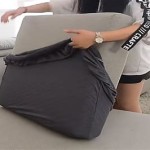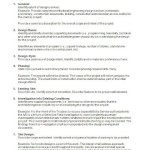```html
Spray Painting Interior Walls: A Comprehensive Guide
Spray painting interior walls is an efficient method for achieving a smooth, uniform finish. This technique, when executed correctly, offers advantages over traditional brushing and rolling, particularly for large surfaces or intricate details. However, successful spray painting demands meticulous preparation, the right equipment, and a thorough understanding of the process.
This article provides a detailed guide to spray painting interior walls, covering essential aspects from surface preparation to cleanup. The information aims to equip readers with the knowledge necessary to undertake this project with confidence and achieve professional-looking results.
Key Point 1: Preparing the Walls and the Room
Thorough preparation is paramount to a successful spray painting project. Neglecting this step can lead to uneven surfaces, paint adhesion issues, and ultimately, a less-than-desirable outcome.
The initial step involves removing all furniture, wall hangings, and other items from the room. Any remaining items that cannot be moved should be adequately covered with drop cloths or plastic sheeting. This protection is crucial to prevent overspray from damaging or soiling belongings.
Next, meticulous cleaning of the walls is necessary. This process removes dust, dirt, grease, and other contaminants that can impede paint adhesion. A mixture of mild detergent and water is generally effective for this purpose. The walls should be scrubbed gently and then rinsed thoroughly with clean water. Allow the walls to dry completely before proceeding.
Addressing imperfections is the next critical step. Fill any holes, cracks, or dents with spackle or drywall compound. Apply the compound smoothly and allow it to dry completely according to the manufacturer's instructions. Once dry, sand the repaired areas until they are flush with the surrounding wall surface. Use fine-grit sandpaper to avoid creating deep scratches.
Masking is essential to protect areas that should not be painted, such as trim, windows, doors, and light fixtures. Use high-quality painter's tape to create clean, crisp lines. Ensure the tape is firmly adhered to the surface to prevent paint from bleeding underneath. For larger areas, such as windows and doors, use plastic sheeting in conjunction with painter's tape for comprehensive protection.
Finally, consider the ventilation of the room. Spray painting produces fumes that can be harmful to breathe. Open windows and use fans to circulate air and exhaust fumes. Wearing a respirator mask is strongly recommended to protect your respiratory system from harmful paint particles and vapors. A properly ventilated workspace is critical for both safety and the quality of the paint job, as excessive humidity can affect the paint's drying time and finish.
Key Point 2: Selecting the Right Equipment and Paint
Choosing the right equipment and paint is crucial for achieving the desired finish and ensuring the efficiency of the spray painting process. Different types of sprayers are available, each with its own advantages and disadvantages.
Airless sprayers are a popular choice for interior wall painting due to their ability to deliver a consistent stream of paint at high pressure. This results in a smooth, uniform finish and allows for faster coverage of large surfaces. Airless sprayers are generally more expensive than other types of sprayers, but they offer greater efficiency and professional-quality results.
HVLP (High Volume Low Pressure) sprayers use a large volume of air at low pressure to atomize the paint. This results in less overspray and better control, making them a good choice for detail work and smaller areas. HVLP sprayers are typically less expensive than airless sprayers, but they require more skill and patience to operate effectively.
Aerosol spray cans are a convenient option for small touch-up jobs or painting intricate details. However, they are not recommended for painting large areas due to their limited capacity and inconsistent spray pattern. Furthermore, achieving a consistent finish with aerosol cans can be challenging.
The selection of paint is equally important. Interior latex paints are generally preferred for their durability, ease of cleaning, and low odor. Choose a paint specifically formulated for interior walls, as these paints are designed to withstand the wear and tear of everyday use.
Consider the desired sheen level when selecting paint. Matte paints offer a low-luster finish that is good at hiding imperfections. Eggshell paints have a slightly higher sheen and are more durable than matte paints. Satin paints have a smooth, velvety finish and are easy to clean. Semi-gloss paints offer a high-gloss finish that is very durable and easy to clean, but they can also highlight imperfections.
Before using the chosen paint, it is essential to thin it according to the sprayer manufacturer's instructions. Thinning the paint helps it flow smoothly through the sprayer and prevents clogging. Use a paint thinner specifically designed for the type of paint being used.
Always test the sprayer and paint on a piece of cardboard or scrap material before applying it to the walls. This allows you to adjust the sprayer settings and ensure that the paint is flowing properly and producing the desired finish. Practice your spraying technique to achieve a consistent and even coat.
Key Point 3: Mastering the Spray Painting Technique and Cleanup
Proper spray painting technique is essential for achieving a professional-looking finish. Inconsistent application can result in streaks, runs, and uneven coverage.
Hold the sprayer at a consistent distance from the wall, typically around 10-12 inches. Maintain a steady, even pace as you move the sprayer back and forth. Overlapping each pass by about 50% ensures complete coverage and prevents streaks.
Use a consistent trigger pull to maintain a uniform flow of paint. Avoid starting or stopping the sprayer while it is pointing at the wall, as this can create blotches. Instead, start and stop the sprayer just before and after each pass.
Apply thin, even coats of paint rather than one thick coat. Multiple thin coats will dry more evenly and result in a smoother, more durable finish. Allow each coat to dry completely before applying the next coat.
Pay attention to corners and edges. Use a technique called "feathering" to blend the edges of the sprayed area with the surrounding wall. This involves gradually reducing the amount of paint sprayed at the edges to create a seamless transition.
After completing the spray painting, allow the paint to dry completely according to the manufacturer's instructions. This may take several hours or even overnight, depending on the type of paint and the humidity level.
Once the paint is dry, carefully remove the painter's tape and plastic sheeting. Pull the tape away from the painted surface at a 45-degree angle to prevent the paint from peeling. If any paint has bled under the tape, use a razor blade or utility knife to score the paint line before removing the tape.
Clean the sprayer immediately after use to prevent the paint from drying and clogging the nozzle. Follow the manufacturer's instructions for cleaning the sprayer. Typically, this involves flushing the sprayer with water or a solvent, depending on the type of paint used. Disassemble the sprayer and clean all of the individual parts thoroughly.
Dispose of any leftover paint and cleaning supplies properly according to local regulations. Store the sprayer in a clean, dry place for future use.
Finally, inspect the painted surface for any imperfections. Touch up any areas that need attention with a brush or roller. Enjoy your newly painted interior walls!
```
How To Spray Paint Interior Walls Paintenance Melbourne

Spray Everything Fine Homebuilding

Spray Painting And Back Rolling Dulux

Beginner Guide To Painting Interior Walls With A Sprayer Lemon Thistle

Yes You Can Use A Paint Sprayer Indoors Our Spare Room Makeover Proves It Painting Walls Tips Interior Wall Spray

How To Paint An Interior Room With A Sprayer Using Best Walls

How To Spray Paint Interior Walls

Using A Paint Sprayer Indoors What To Know Before You Start

Using A Paint Sprayer Indoors How To Use An Indoor

How To Paint A Room Quickly And Easily








